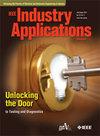Physical Informed-Inspired Deep Reinforcement Learning Based Bi-Level Programming for Microgrid Scheduling
IF 4.2
2区 工程技术
Q2 ENGINEERING, ELECTRICAL & ELECTRONIC
引用次数: 0
Abstract
To coordinate the interests of operator and users in a microgrid under complex and changeable operating conditions, this paper proposes a microgrid scheduling model considering the thermal flexibility of thermostatically controlled loads and demand response by leveraging physical informed-inspired deep reinforcement learning (DRL) based bi-level programming. To overcome the non-convex limitations of Karush–Kuhn–Tucker (KKT)-based methods, a novel optimization solution method based on DRL theory is proposed to handle the bi-level programming through alternate iterations between levels. Specifically, by combining a DRL algorithm named asynchronous advantage actor-critic (A3C) and automated machine learning-prioritized experience replay (AutoML-PER) strategy to improve the generalization performance of A3C to address the above problems, an improved A3C algorithm, called AutoML-PER-A3C, is designed to solve the upper-level problem; while the DOCPLEX optimizer is adopted to address the lower-level problem. In this solution process, AutoML is used to automatically optimize hyperparameters and PER improves learning efficiency and quality by extracting the most valuable samples. The test results demonstrate that the presented approach manages to reconcile the interests between multiple stakeholders in MG by fully exploiting various flexibility resources. Furthermore, in terms of economic viability and computational efficiency, the proposal vastly exceeds other advanced reinforcement learning methods.求助全文
约1分钟内获得全文
求助全文
来源期刊

IEEE Transactions on Industry Applications
工程技术-工程:电子与电气
CiteScore
9.90
自引率
9.10%
发文量
747
审稿时长
3.3 months
期刊介绍:
The scope of the IEEE Transactions on Industry Applications includes all scope items of the IEEE Industry Applications Society, that is, the advancement of the theory and practice of electrical and electronic engineering in the development, design, manufacture, and application of electrical systems, apparatus, devices, and controls to the processes and equipment of industry and commerce; the promotion of safe, reliable, and economic installations; industry leadership in energy conservation and environmental, health, and safety issues; the creation of voluntary engineering standards and recommended practices; and the professional development of its membership.
 求助内容:
求助内容: 应助结果提醒方式:
应助结果提醒方式:


